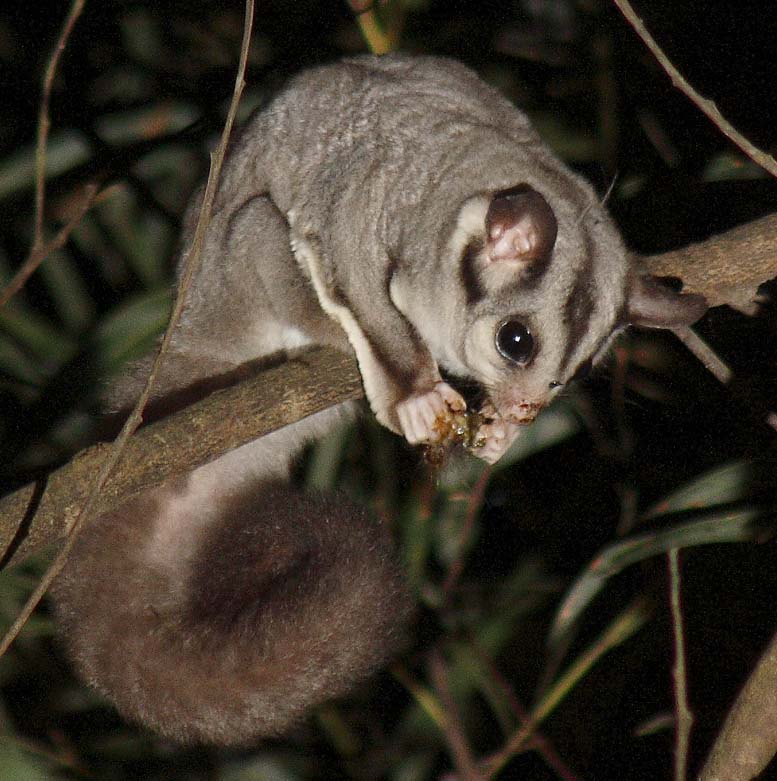Gliders are nocturnal marsupials characterised by the folds of skin that extend between their ankles and wrists. Australia is home to seven glider species and as their name suggests, they are all able to glide, and spend most of their lives in the treetops. Like many Australian fauna, they rely on tree hollows and therefore require mature forests with availability of hollow bearing trees.
The largest is the greater glider, which is identified by its large size, large furred ears, and very long tail (up to 60 cm long). They prefer old growth eucalypt forest where they feed primarily on eucalypt leaves. Yellow-bellied gliders are the second largest and are distinguished by their long dark tails and distinctive black dorsal stripe. They prefer tall mature eucalypt forests where they feed on insects, pollen, nectar and tree sap.
Sugar gliders are the most common gliders and can be found in a wide range of woodland and forest habitats but require hollows and a good source of insects and flowers. Squirrel gliders are often found in similar habitats to sugar gliders and can sometimes be misidentified as sugar gliders. They are larger than sugar gliders, with a very fluffy (squirrel like) tail, particularly near the base. Sugar gliders occasionally have a white tip on their tail, while squirrel gliders never do, and squirrel gliders have longer and more pointed heads and longer narrower ears than sugar gliders. Consistently distinguishing between the two species can be very difficult and may at times require an experienced observer.
The smallest gliders are the feathertail gliders (broad-toed and narrow toed) weighing in at only 10-15 grams, which feed on a vide variety of food including insects, nectar and seeds. They live in rainforest and wet sclerophyll in eastern Australia and are characterised by their feather-like tail fringe.
The mahogany glider is the only glider listed as endangered, with a restricted range in lowland coastal woodland in the southern wet tropics of Queensland. Their closest relative is the squirrel glider, but the mahogany glider is much larger and has a long slender tail.
Surveys
Gliders are most active at night, so nocturnal searches are the most common survey techniques. These searches focus on spotlighting to scan the trees for any eye-shine that may reflect back to the observer, usually with the addition of binoculars to assist with identification. Most gliders also make very distinctive calls at night and can be identified based just on their vocalisations.
Yellow-bellied gliders are the most vocal and their loud, gurgling calls can be heard up to 500 meters away. The most common glider call, from the sugar glider, can be heard during most nocturnal surveys sounding similar to the yapping of a small dog. The squirrel glider vocalisations on the other hand are very different with more throaty and deep guttural chatter.
Other modes of indirect identification include scats and feeding scars on trees. Feeding scars on trees can be a good indicator of glider presence and activity in the area but cannot always identify the species that made them.
Using these direct and indirect methods of glider identification in the field gives a picture of the species present and how they are using the area.

